How to use ammonia for tomatoes?
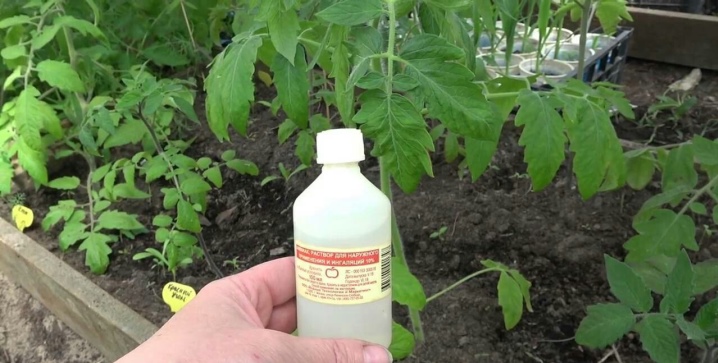
In the garden plot and vegetable garden, it is very often necessary to use all kinds of means that help fight pests, improve the quality of plants and increase yields. Tomatoes are a crop that requires a lot of attention. The means used are very different. Including ammonia. Therefore, it is important to know how to use ammonia for tomatoes.
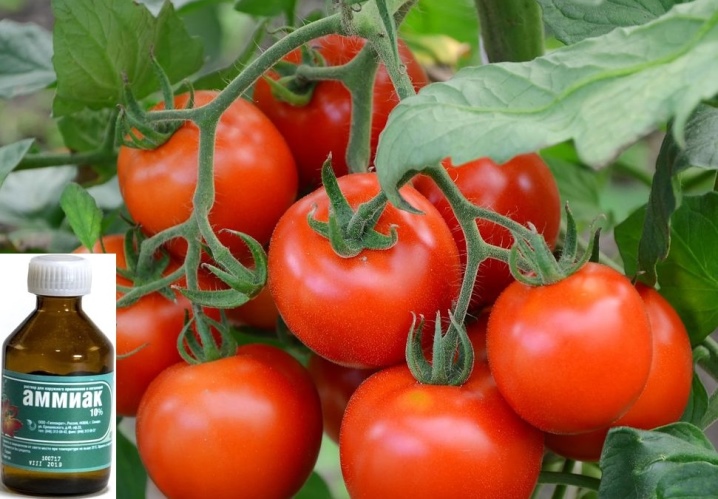
Advantages and disadvantages
Tomatoes are often very moody. They always require careful maintenance and a certain amount of time. Therefore, only an attentive and hardworking summer resident can get a really good harvest of tasty and beautiful fruits. In fact, it is not so difficult if you follow all the care recommendations and use various useful tools.
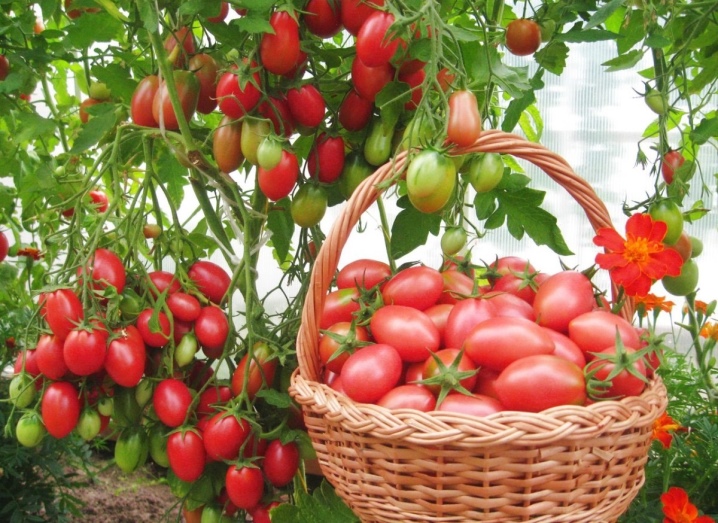
Ammonia for tomatoes is one of the most important care products, which has many advantages:
- such a solution can be attributed to nitrogen-containing fertilizers, which are well absorbed by plants;
- unlike many other fertilizers (for example, from the same ammonium nitrate or urea), ammonia has a positive effect on the bush immediately, it does not require a cumulative effect;
- due to the nitrogen contained in ammonia, the plants improve flowering, which in the future contributes to the collection of a good harvest;
- in addition, ammonia is also used in the fight against pests, fungal diseases;
- the product is always available and inexpensive, it can be purchased at any pharmacy;
- you can prepare the solution very quickly, it will take a matter of minutes;
- the solution does not need to be insisted, immediately after preparation it is used for its intended purpose.
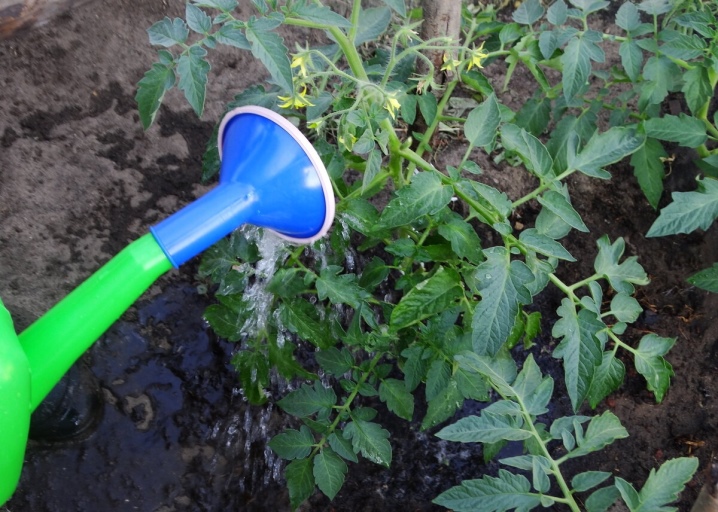
There are also disadvantages, but they are not so significant as to refuse the use of ammonia. These include the following nuances:
- proportions should be strictly observed, since an incorrect dosage of ammonia can harm the plant, with an excess of nitrogen, fungal diseases can occur, tomatoes will increase the green mass, and there will be few fruits;
- in addition, it is necessary to process the bushes using protective equipment - a mask and gloves.
With solutions prepared on the basis of ammonia, you can spray the bushes or water both in the greenhouse and in the open field, depending on what effect you want to achieve.

How to prepare the solution?
It is best to prepare ammonia water outdoors. Ammonia has a rather pungent odor, so care should be taken to keep children and pets away. And you yourself should inhale this smell with caution.
To dilute the ammonia for tomatoes correctly, you need to observe certain proportions, and they will depend on the purpose for which the solution is being prepared.
- If you need to nourish the roots during the period of active growth, dilute 40 ml of ammonia in 10 liters of water. Before this input must be defended for 24 hours. Water once a week, not more often. Such dressings for the season will be enough for the plant in the amount of 5 pieces.
- Provided that the plant has all the signs of a lack of nitrogen (the leaves turn yellow, the bush develops extremely slowly, there is a small number of flowers), it is worth diluting 80 ml of ammonia per 10 liters.
- If you need to spray plants in the fight against pests, 20 milliliters is enough for a ten-liter bucket of water.
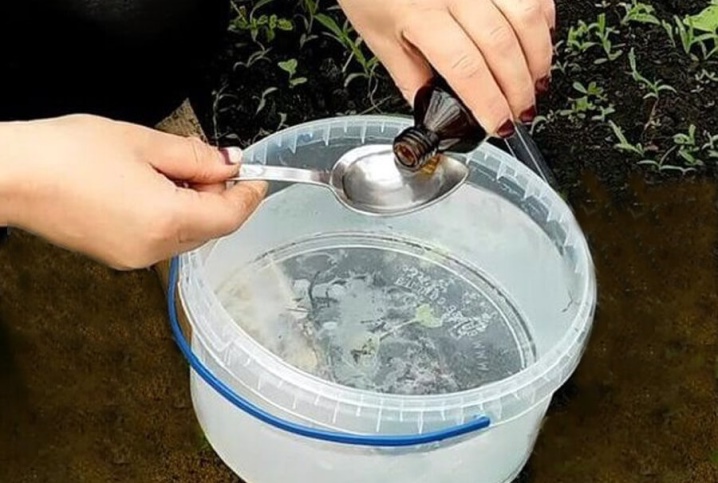
How to use it correctly?
There are two ways to process tomatoes in the garden with ammonia solution - sprinkle on the upper parts of the plants or pour liquid under the root. Treatment can involve two methods at the same time, but spraying and watering at different times is also possible.
In spring, it is customary to fertilize plants for their speedy growth. And the use of fertilizing based on ammonia will be very useful, because it is nitrogen at the beginning of the vegetative period that helps the plants to develop correctly. In this case, both foliar feeding and watering the plants will be useful.
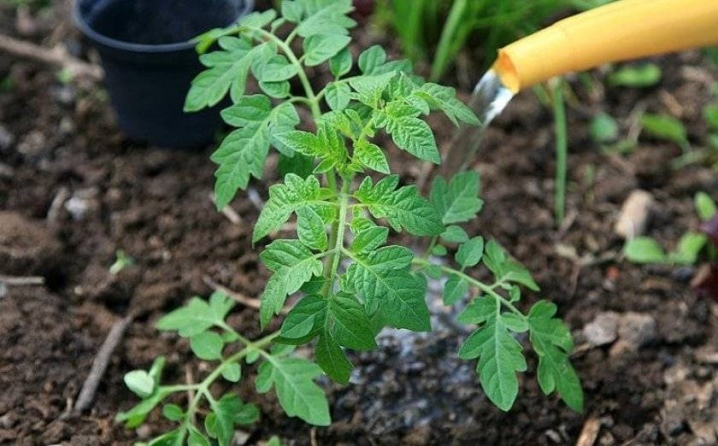
The dosage in this case can be 40-50 ml per ten-liter bucket of water. Many gardeners prefer to apply this dressing by adding laundry or liquid soap to the water. With its help, the solution lingers on the leaves longer. In addition to nutrients, such a solution provides protection against pests. The solution is prepared very simply: ammonia from a bottle is poured into settled water, and a bar of soap is rubbed on a grater, then everything is thoroughly mixed until it is completely dissolved.
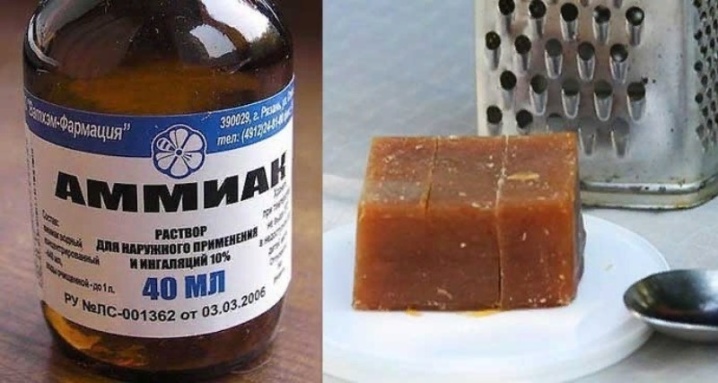
Tomatoes should be sprayed only in dry, calm weather. At the same time, the processing is not carried out even in the heat. You should choose early morning hours or evening when the sun has waned. When spraying, you can use a spray bottle. But it will also help to irrigate the leaves and watering can.
The ammonia tends to evaporate quickly. Therefore, the solution must be applied immediately after preparation.
Ammonium is used in different cases and other components are added to enhance the action of the solution.
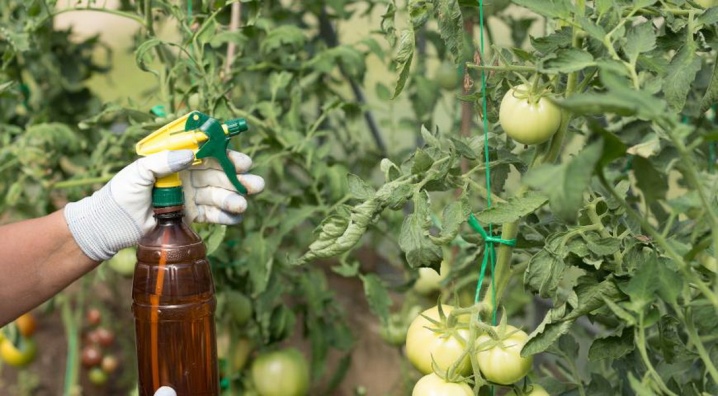
For feeding
Top dressing of tomatoes is carried out at different times - from seedlings to full ripening of the crop. Outdoor bushes need nitrogen, but it's important not to overdo it. Otherwise, they will begin to increase the green mass, and the goal of any gardener is to get as many flowers as possible, and then fruits.
When flowers and ovaries form, you do not need to spray the bushes with ammonia, as there is a risk of scaring off beneficial pollinating insects. At this time, it is better to feed the plant by pouring liquid under the root. If the bushes look lush, strong and healthy, you should not get carried away with nitrogen. But if there is a shortage of it, you need to take action. And this is expressed in the following:
- bushes grow very slowly;
- very few colors are formed;
- stems are thin and fragile;
- the leaves turn yellow and dry out.
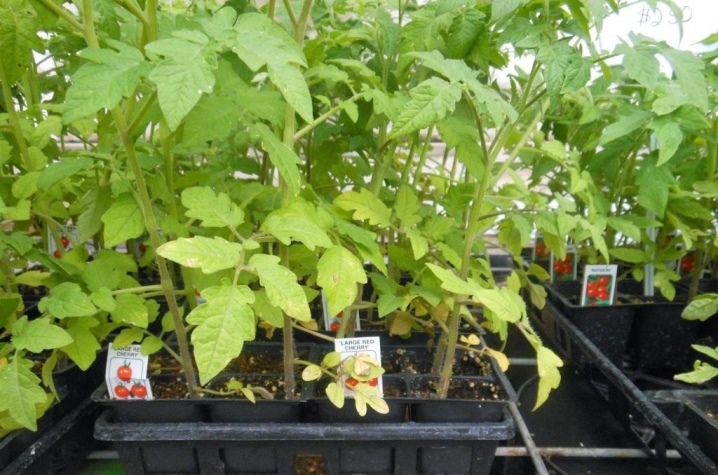
At the very beginning, the solution is made weaker. With the growth of bushes and the ripening of flowers, the concentration of the solution is increased. If at the very beginning, for example, one tablespoon of ammonia per bucket is enough, then later you can add 2-3 tablespoons. Many summer residents also mix ammonia solution with iodine. It should be borne in mind that, in addition to nitrogen, other fertilizing is also introduced. They need to be alternated, and not brought in at the same time. For example, if nitrogen fertilizers were applied, potash should be applied only after two weeks.
Before adding the solution with ammonia, the tomatoes must be watered to avoid scalding the roots.
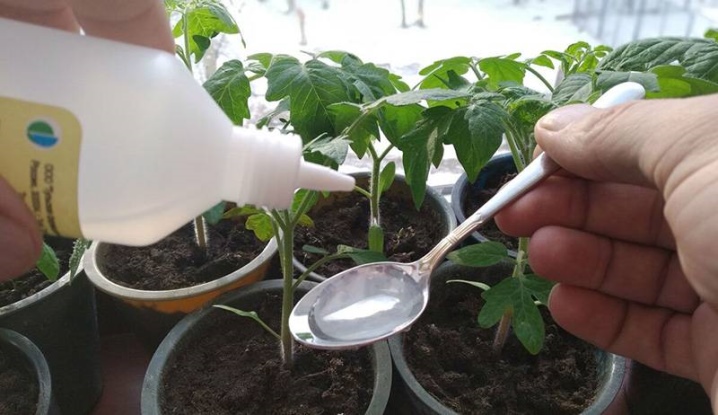
To protect against diseases and pests
The ammonia will be very useful not only as a fertilizer, but also as a means of fighting various diseases, for example, phytophthora, powdery mildew. It will also help rid the plant of black midges, aphids, ants, bear, wireworm and other pests. If the plants are annoyed by aphids, you need to prepare a solution of ammonia, water and laundry soap.
At the same time, it is not enough just to water the bushes from a watering can on top or spray from a spray bottle. It is necessary to carefully process each leaf from the inside, it is there that aphids are hiding. This, of course, will take enough time, but it will be possible to cope with aphids the first time, the main thing is to thoroughly wash it off the bushes. If a large number of ants are found, water each bush and spray the foliage. This procedure will need to be repeated after 2 weeks.
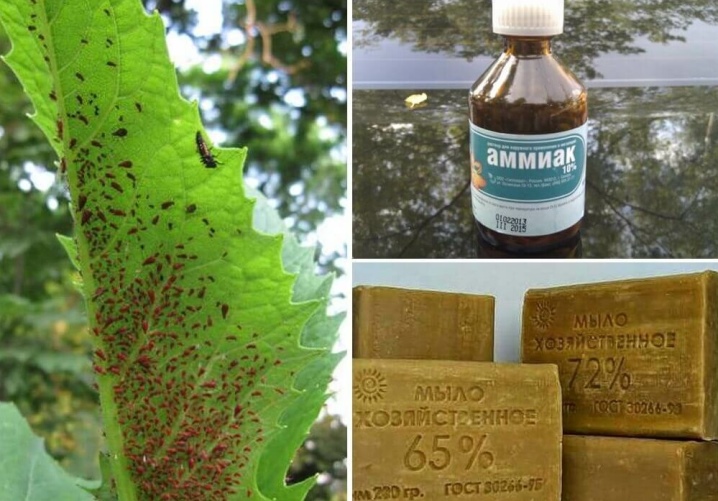
For watering seedlings
Ammonium is used even when planting seeds. Only 1 ml of ammonia is added per liter of water. When planting, a little of this liquid is added to each well. Then the seedlings are watered with the same solution throughout the entire growth, while the tomatoes are in the boxes. But, of course, not every day, once every 2 weeks is enough. When the seedlings are moved outdoors, they can also be supported with a nutrient solution. And then you need to monitor the development of the bushes and control their appearance.
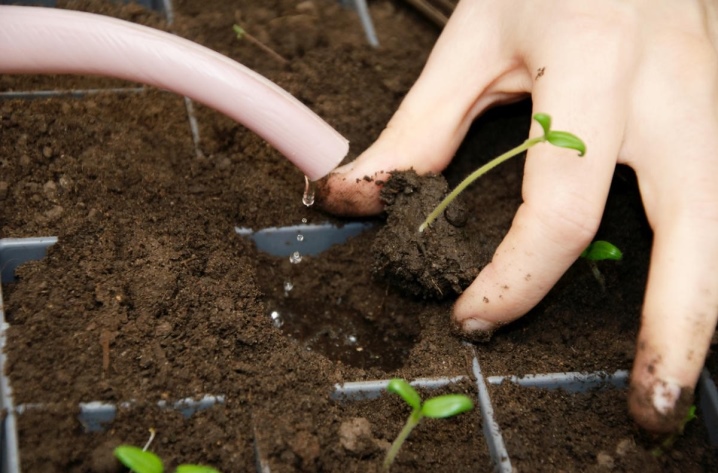
Even if outwardly the tomatoes look healthy, green and cheerful, many summer residents still prefer to feed them for the purpose of prevention. In addition to ammonia, add a couple of tablespoons to a bucket of apple cider vinegar. When the first leaves appear, the seedlings are watered very carefully, most often they are simply irrigated from a spray bottle, like the ground, when they are waiting for seed shoots.
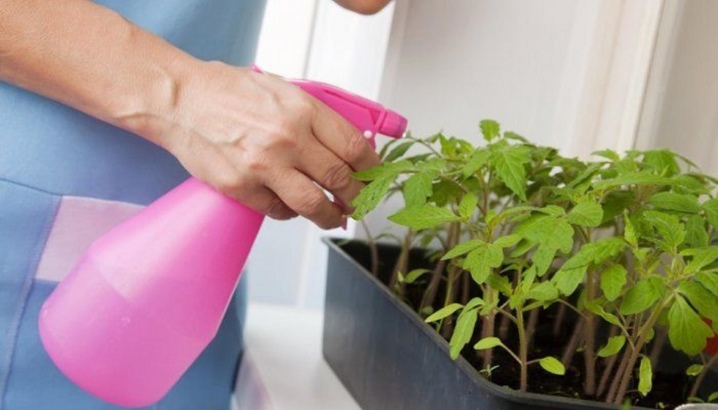
For the ripening of the crop
Ammonia can be used not only during the growth and emergence of ovaries, but also when the fruits are already present, but slowly ripen. Perhaps cloudy weather or tomatoes are in the shade most of the day. One way or another, the bushes can be sprayed with ammonia solution. It will not harm the fruit. But you need to arrange such a procedure for the last time at least a week before harvest.
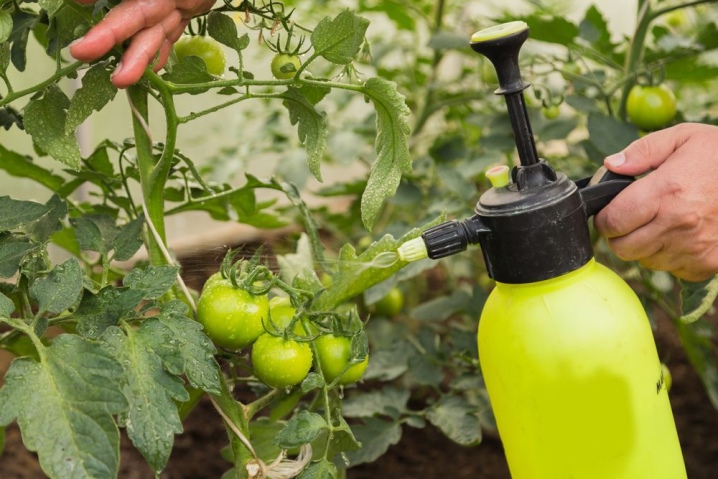
To make the tomatoes ripen faster and even increase in size, you can prepare the following solution:
- a tablespoon of ammonia will be enough for 10 liters of water;
- a glass of apple cider vinegar is added to the same container;
- in the end, supplement the solution with liquid soap, 10 milliliters is enough;
- all this is mixed well, liquid is poured into a spray bottle.
With this solution, you need to spray the fruits well and then wait for their early ripening.
The main thing is not to forget the fruits removed from the bush, then rinse well under running water.
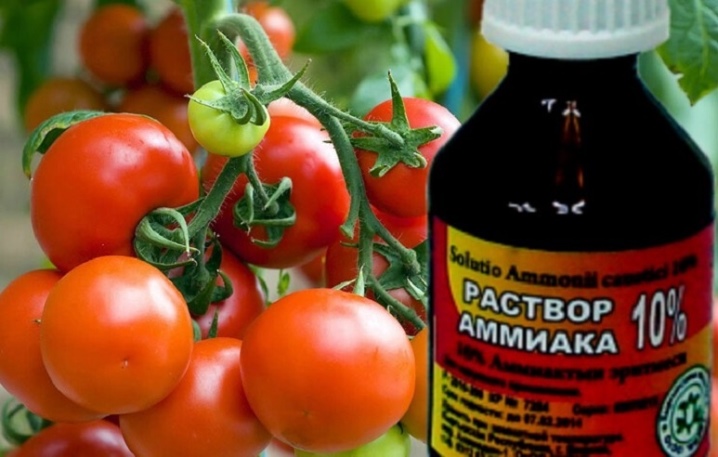
Useful Tips
Each gardener has his own secrets of harvesting a good harvest, but ammonia is a universal remedy that many use. You just need to take precautions and dilute the solution correctly. A few simple tips will help you make the processing efficiently and not harm yourself.
- First of all, you need to remember that it is imperative to protect the respiratory system and eyes from ammonia. If suddenly the solution gets into the nose or eyes, you need to rinse them under running water. Gloves are also required. Especially if you have to wash each leaf and carefully remove pests from the bush.
- The solution is used immediately, otherwise the ammonia will disappear and there will be no sense. After the plants are processed, the remnants of the unused solution are poured out, the dishes are washed.
- When preparing the solution, you should not be distracted by anything and do not leave all the ingredients unattended. Especially if there are small children or animals in the house who definitely need to check and try everything.
- To make the solution stay on the leaves longer, laundry soap is added to it. But many also replace it with liquid soap, dishwashing detergent, shower gel, or shampoo.
- It is very important to observe the dosage when preparing the solution. For all its useful properties, ammonia can also harm plants. If you exceed the dosage when processing seedlings or adult plants, they may simply die, as the bushes may burn out. This is especially true for tender young seedlings. So it is better to make the solution less intense and observe the plants than to overdo it when it will be impossible to fix anything.














The comment was sent successfully.